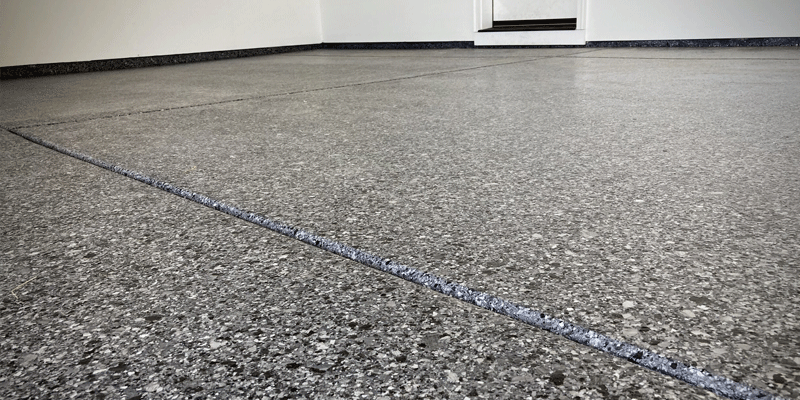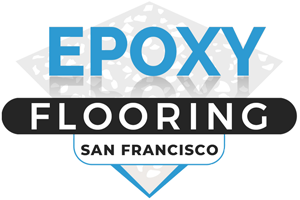Table of Contents

If you have a slab that has been coated with epoxy before, you may be wondering how to prevent the epoxy coating from peeling. There are a few things that you can do to ensure a successful application. Listed below are some tips to keep in mind when installing and maintaining your epoxy floor.
Primer
Using an epoxy primer before applying your top coat of epoxy is a must. Primer prevents the epoxy coating from peeling or chipping by providing a good surface finish. Epoxy primers contain zinc phosphate, a corrosion inhibiting pigment. They seal surfaces and prevent oxygen from getting into the epoxy. These primers are nonporous and therefore do not absorb moisture. As such, they are ideal for use on bare metal, waterproof surfaces, and marine applications.
Epoxy primers come in two parts, one of which is a sealant. It bonds with other materials like steel and concrete and is used to create smooth surfaces for the topcoat. It is also helpful for stacking and repairing uneven surfaces. After applying the primer, sand the surface flat and any edges, and then apply the top coat of epoxy. It is essential to use a suitable primer because the topcoat will not adhere if it has a bad surface.
When applying an epoxy coat, it is essential to allow the first coat to dry before you apply a second. Failure to do this will cause the coating to bubble or peel. A thin layer of primer is used to prevent the epoxy from peeling. If the primer layer is too thin, it may produce a peeling surface. You must sand the surface to fix this. When applying the top coat, use the same method as you did for the primer.
Applying Even Coats of Epoxy
You should avoid applying a thin or uneven coat of epoxy on wood surfaces. These kinds of materials are prone to imperfections, so it’s important to use several coats. You should always try to apply each coat at a thickness of about 1/8″ to get an even coating. It’s also important to avoid applying epoxy in high temperatures and make sure you wear gloves to protect your hands. Using multiple coats of epoxy on wood can produce great results, but you must follow the correct procedures to prevent peeling and chipping.
First, prepare your floor. In addition to preventing peeling, grinding will also protect your floors from water. If you’ve had water on the concrete, you should grind it down a little bit. Doing so will prevent cracks and ensure an even finish. Remember that grinding is not the same as resurfacing the floor. It’s actually just a preparation process for the epoxy coating.
Next, apply two to three coats of epoxy paint. This will provide a strong base for the polyurethane finish. This combination performs beautifully together, providing a strong seal and protecting the structural component. Using a grinder will help you apply the coats of epoxy before the previous one dries. When the first coat dries, apply the next. When the previous one is dry, apply two or three more coats.
Air Bubbles
One of the most common problems with epoxy coatings is the presence of tiny air bubbles. These bubbles can appear on the floor as small pinheads or in clusters, like a honeycomb. The reason for these air bubbles is entrapped air during the mixing process. Excessive air movement can also cause the surface to dry too quickly. If this occurs, the coating may peel off easily.
To avoid air bubbles in epoxy coatings, make sure the parts are mixed properly. The Part A resin should be mixed with the Part B hardener in the correct proportion. Some products require an induction period to cure. If the epoxy is applied too soon after mixing, air bubbles will form. Also, the hotter the temperature, the less time you will have to finish the application. If this happens, the epoxy coating may peel and crack.
One way to solve this problem is to heat the epoxy before applying it to the surface. This will draw out the trapped gasses and ensure that the epoxy will adhere properly. Alternatively, you can use a blow dryer or hot air gun to force the air bubbles out of the epoxy. Hot air guns are better than wall fans because they allow you to remove multiple bubbles at once. These tools can be useful when removing multiple bubbles in a hurry.
Poor Quality Slab
The best way to avoid an epoxy coating that peels is to choose a high-quality concrete slab. While a poorly prepared slab can cause the coating to fail, a poorly finished slab is much more likely to peel. The first step is to perform a scratch test. Rent a floor prep machine from a local tool rental store. Then, scrape off any weak or cracked concrete layer. Finally, do a moisture test on the slab by sealing a small plastic square with duct tape.
Concrete preparation is essential for a successful epoxy coating application. When properly prepared, the concrete is able to “wet out” the epoxy coating. This means it can soak up the pores and impurities that can affect the future adhesive qualities of the coating. When the material is applied too fast, it can be too thick and not “wet out” the concrete completely. It may also fail prematurely because of the lack of time needed to cure the material properly.
Repairing Small Areas of Peeling
You may wonder how to fix a small area of peeling epoxy coating. The most common solution is to retouch the area. This requires applying new epoxy over the old coating. Water-based epoxy is more prone to peeling, so you should use solvent-based epoxy instead. Another possible solution is to sand the area and apply a new layer of epoxy. Regardless of the method you choose, it’s important to thoroughly clean the area first.
First, sand the area to remove any dust and debris that might have accumulated underneath the coating. If this is done incorrectly, the epoxy may start to peel and chip away. You should also clean the area with a rag saturated with denatured alcohol but not so wet that it dries. Next, prepare a two-part epoxy for repair. Mix the two parts with a stirrer bit or drill.
You can also use a paint scraper to repair small areas of peeling epoxy coating. Hold the scraper at an angle with moderate pressure to avoid damage to the surrounding area. A paint scraper can also be used to remove a small portion of the coating and loosen it. You can also use a palm sander to smooth out the surface. Sixty-grit sandpaper will do just as well.
Re-coating Small Areas of Discoloration
A small area of discoloration on an epoxy-coated driveway may be caused by a chemical spill, old, or improperly installed epoxy. In some cases, the discoloration can be remedied by tinting the sealer and applying a new coat of epoxy. Peeling and bubbling of an epoxy coating is a sign of a problem and requires the removal of the old coating and re-application. Many people need to re-coat small areas of discoloration, especially when the area is more difficult to reach.
Exposure to high temperatures is another cause of discoloration on an epoxy floor. The epoxy supplies placed in consistently high temperatures will yellow or turn light brown. Exposure to sunlight or carbon monoxide can cause the newly applied epoxy to change color and become a different color. Some of these chemicals react with the newly applied epoxy, and the floor can end up yellow or other colors.
In addition to re-coating small areas of discoloration, you can also use a spiked roller to apply the epoxy. This will help release trapped air and gas while applying the coating. A spiked roller will help prevent a white haze from forming on a wood surface. The coating is less likely to peel if the surface is properly cleaned and cured.
Once you know how to prevent an epoxy coating from peeling, you can keep your floors looking sleek for many years. Reach out to our company today if you need a customized epoxy plan or a free consultation on epoxy services.
